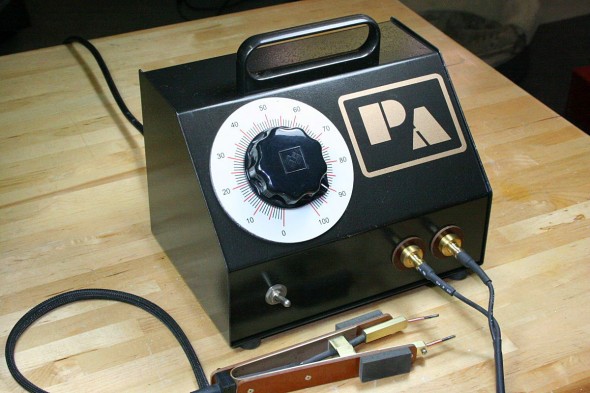Put Soldering Heat Where You Need it – Now!
Resistance Soldering
Resistance soldering is a process by which objects to be soldered together are heated by passing a current through them rather than by applying heat from an external source. Localized heating is caused by relatively high current passing through the resistance of the junction. As long as the heating rate of the junction exceeds the thermal dissipation rate, the temperature will rise high enough for solder to melt and flow.
There can be several advantages to using resistance soldering for certain applications, but two big ones stand out:
- Speed – a resistance soldering unit can generate heat in a localized spot much more quickly than application of a 700 to 800 degree soldering iron which relies on conduction for heat transfer. A resistance soldering unit can also exceed soldering temperatures, heating a junction to bright orange, actually welding small parts together.
- Steep temperature gradient – because of the rapid heating of the joint being soldered, it is possible to obtain a very high temperature gradient over a short physical distance, making it easier to prevent nearby solder joints from melting and falling apart.

